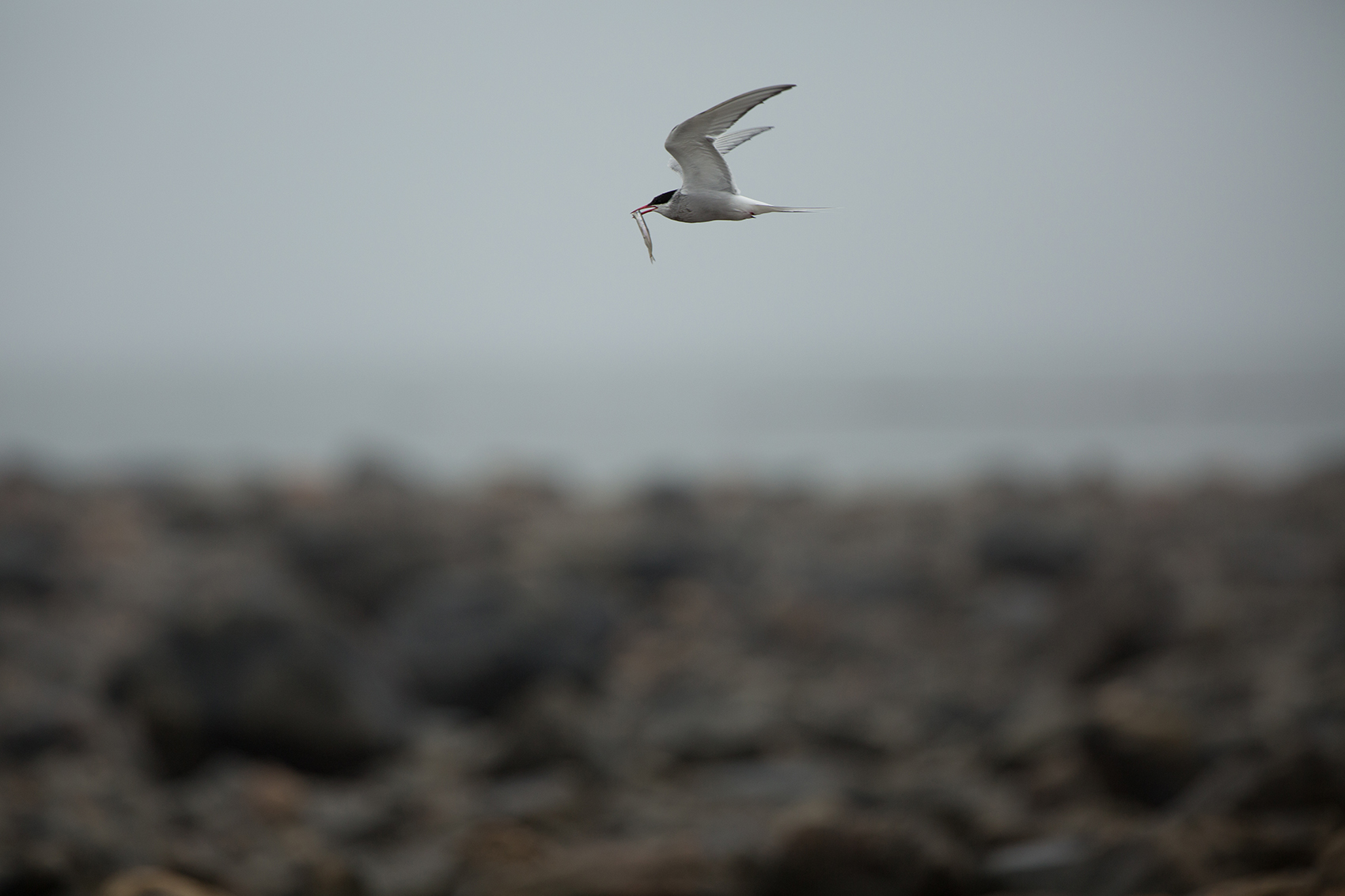Scientific name: Sterna paradisaea
Average length/height: 25–40 cm (9.8–15.7 in)
Average weight: 85–125 g (3–4.4 oz)
Characteristics
Silvery grey and white, Arctic terns have a black bandit-like cap on their heads down past their eyes and extending slightly on the neck. Their bills are a beautiful rich red, slightly longer in length to allow for grabbing food with long forked tails. Arctic terns can reach speeds of 40 kilometers per hour (nearly 25 miles per hour).
Territory/Geographical Locations
Arctic terns cover vast distances in their migration, and like snowbirds who go down to Florida to escape the winters in Canada, Arctic terns see two summers. They can travel more than 90,000 kilometers per year which adds up to approximately 2.4 million kilometers (1.49 million miles) over the span of their life (Oceanwide Expeditions, n.d.). They are found in both polar regions of the world, Antarctica and the Arctic. Their migration takes them from North America, to Europe and northern Africa, and then as far south as southern Australia, New Zealand and finally Antarctica (The Cornell Lab, n.d.).
Population & Reproduction
The Arctic tern population is thriving with over a million in the world. They have a lifespan of between 20 and 30 years. Parental duties are split between the mother and father while eggs are being incubating, which takes three to four weeks. Their nests usually include one to three eggs and are found on flat ground surrounded by grasses and pebbles. They are very well hidden from predators and harmless observers.
Diet
Arctic terns eat fish and crustaceans. If you have the pleasure of watching them hunt, you’ll see their wild, plunging dives down to the water where they’ll nimbly scoop up a small fish from the water’s surface. These fish species are typically quite small, no more than six inches in length. Their diet includes sand eels, herring, cod and smelt. Occasionally, they will grab insects as well (The Cornell Lab, n.d.).










